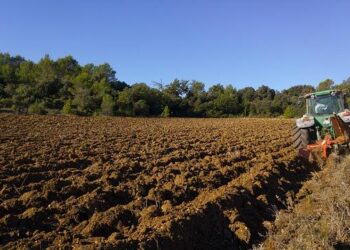Denmark has announced a strategic intervention to support energy giant Ă˜rsted following a dramatic 30% drop in its stock value. The move comes amid growing concerns over the company’s financial stability and highlights the government’s commitment to safeguarding its green energy ambitions. This unprecedented bailout underscores the challenges facing even leading players in the renewable energy sector as market pressures intensify.
Denmark Intervenes to Stabilize Ă˜rsted Amid Stock Market Turmoil
In response to Ă˜rsted’s dramatic 30% plunge on the stock exchange, the Danish government has swiftly stepped in to restore market confidence and stabilize the company’s valuation. As one of Denmark’s flagship renewable energy firms, Ă˜rsted’s stock collapse raised alarms about potential ripple effects on the broader clean energy sector and investor trust. The intervention includes a strategic capital injection and a temporary easing of regulatory constraints, designed to shore up liquidity and maintain operational stability amidst volatile market conditions.
Key elements of the government’s support package include:
- Capital infusion: Immediate acquisition of a significant share stake to bolster Ă˜rsted’s balance sheet.
- Regulatory relief: Temporary suspension of dividend payments to prioritize reinvestment in core projects.
- Market communication: Coordinated messaging to reassure investors and stakeholders.
| Measure | Purpose | Expected Outcome |
|---|---|---|
| Capital Infusion | Enhance liquidity | Stabilize share price |
| Dividend Suspension | Free up cash flow | Support ongoing projects |
| Investor Communication | Rebuild confidence | Reduce market volatility |
Analyzing the Impact of the 30 Percent Stock Decline on Ă˜rsted’s Renewable Energy Projects
The recent 30 percent plunge in Ă˜rsted’s stock has sent ripples through the renewable energy sector, raising concerns over the future of several high-profile projects. Investors are wary, citing increased financial pressures that could delay or downscale key offshore wind farms currently in development. The decline reflects mounting challenges, including soaring raw material costs and regulatory uncertainties across European markets. Despite the downturn, Ă˜rsted’s leadership insists ongoing projects will continue, though strategic adjustments are inevitable to safeguard liquidity and maintain investor confidence.
Key areas likely to be affected include:
- Project Timelines: Potential postponements in commissioning large-scale turbines.
- Capital Allocation: Shifts in budgeting favoring projects with quicker returns.
- Partnerships: Reassessment of joint ventures and external financing options.
The Danish government’s intervention is expected to stabilize Ă˜rsted’s position, but analysts caution that the firm must now prioritize efficiency and cost management to weather the downturn. Below is a comparison of Ă˜rsted’s key project metrics before and after the stock decline:
| Metric | Pre-Decline | Projected Post-Decline |
|---|---|---|
| Capital Expenditure (2024) | €3.2B | €2.5B |
| Project Completion Rate | 85% | 70% |
| New Wind Farm Launches | 5 | 3 |
Strategic Recommendations for Ă˜rsted’s Recovery and Investor Confidence Restoration
To reverse Ă˜rsted’s recent downturn and restore investor confidence, the company must prioritize transparent communication and robust financial strategies. Transparency about ongoing challenges and a clear action plan will help rebuild trust among stakeholders. In parallel, Ă˜rsted should focus on optimizing operational efficiencies by leveraging their leading position in renewable energy technologies. This involves accelerating the integration of advanced digital tools to predict maintenance needs and reduce downtime across their wind farm assets.
Moreover, strategic partnerships and targeted investments will be critical to solidifying Ă˜rsted’s market position. The Danish government’s bailout provides an opportunity to restructure debt and fund innovation. It’s recommended that Ă˜rsted capitalize on this by:
- Investing in emerging renewable sectors such as green hydrogen and offshore storage solutions to diversify revenue streams.
- Expanding collaborative ventures with international energy firms to access new markets and share technological expertise.
- Enhancing shareholder engagement programs to keep investors informed and aligned with company objectives.
| Key Areas | Proposed Actions | Expected Impact |
|---|---|---|
| Operational Efficiency | Implement predictive analytics | Reduce downtime & costs |
| Financial Stability | Utilize bailout funds for restructuring | Lower debt burden |
| Market Expansion | Form strategic alliances | Access new growth markets |
Wrapping Up
As Ă˜rsted navigates this turbulent period following a sharp 30% drop in its stock, Denmark’s decisive intervention underscores the government’s commitment to stabilizing its green energy sector. The bailout aims to restore investor confidence and safeguard the company’s pivotal role in the country’s renewable energy ambitions. Stakeholders will be closely watching how Ă˜rsted adapts to these challenges and the impact of state support on its long-term outlook.
















